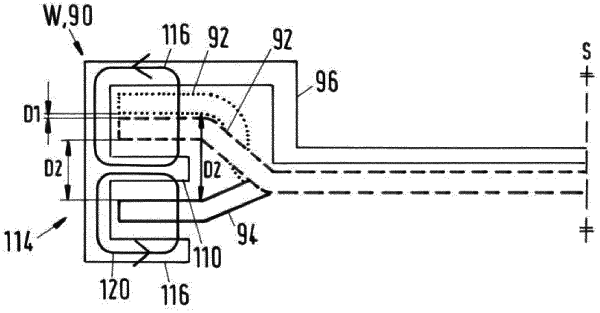| CPC H02J 50/12 (2016.02) [B60L 53/12 (2019.02); H02J 50/005 (2020.01); H02J 50/402 (2020.01); H02J 50/70 (2016.02)] | 19 Claims |

|
1. A conductor arrangement for an inductive power transfer, the conductor arrangement comprising at least three coils that are arranged along a longitudinal axis and that are formed of at least one conductor,
wherein the conductor arrangement comprises at least two winding heads that are arranged opposite to one another along a lateral axis perpendicular to the longitudinal axis and in which conductor sections of each of the coils extend along one another as well as along the longitudinal axis,
wherein, within at least one of the two winding heads and at a location where the at least three coils extend alongside one another, the conductor sections of a first and a second coil of the at least three coils that extend along the longitudinal axis are arranged at a first distance to one another in a first direction perpendicular to both the longitudinal axis and the lateral axis, the first distance being equal to or larger than zero, and the conductor section of a third coil of the at least three coils that extends along the longitudinal axis is arranged at second distances to said conductor sections of the first and second coils in a second direction perpendicular to both the longitudinal axis and the lateral axis, the second distances being larger than the first distance.
|